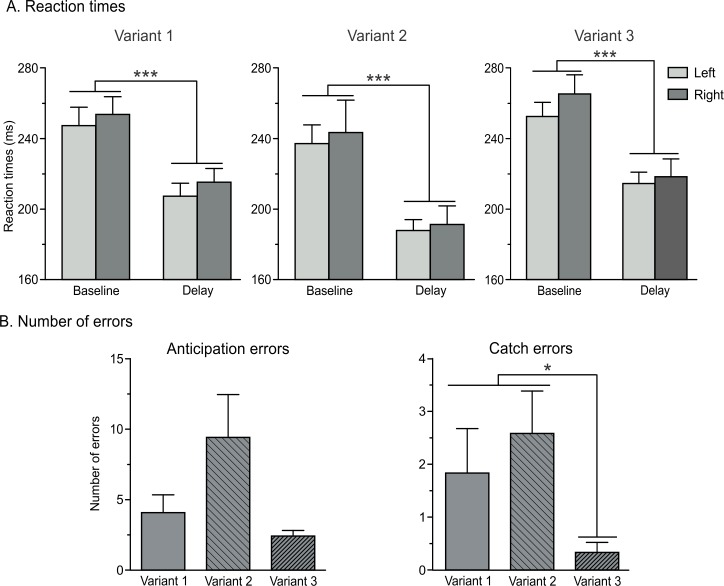Fig 2. Behavioral performance.
(A) Reaction times (ms) for responses performed with the left (light grey bars) and the right (dark grey bars) hands across the three variants of the task in trials at TMSBASELINE and TMSDELAY. (B-C) Number of errors across the three variants of the task. Anticipation errors (B) refer to the number of trials in which participants responded before the onset of the imperative signal, whereas catch errors (C) correspond to trials in which a response was provided in the absence of the imperative signal. Data from left and right responses are pooled together. Note the tendency for errors to be more frequent in Variant 2, particularly when compared to Variant 3 (main effect of the factor VARIANT, p = 0.12 and p < 0.01 for anticipation and catch errors, respectively). *p<0.05 and ***p<0.001: significantly different.

